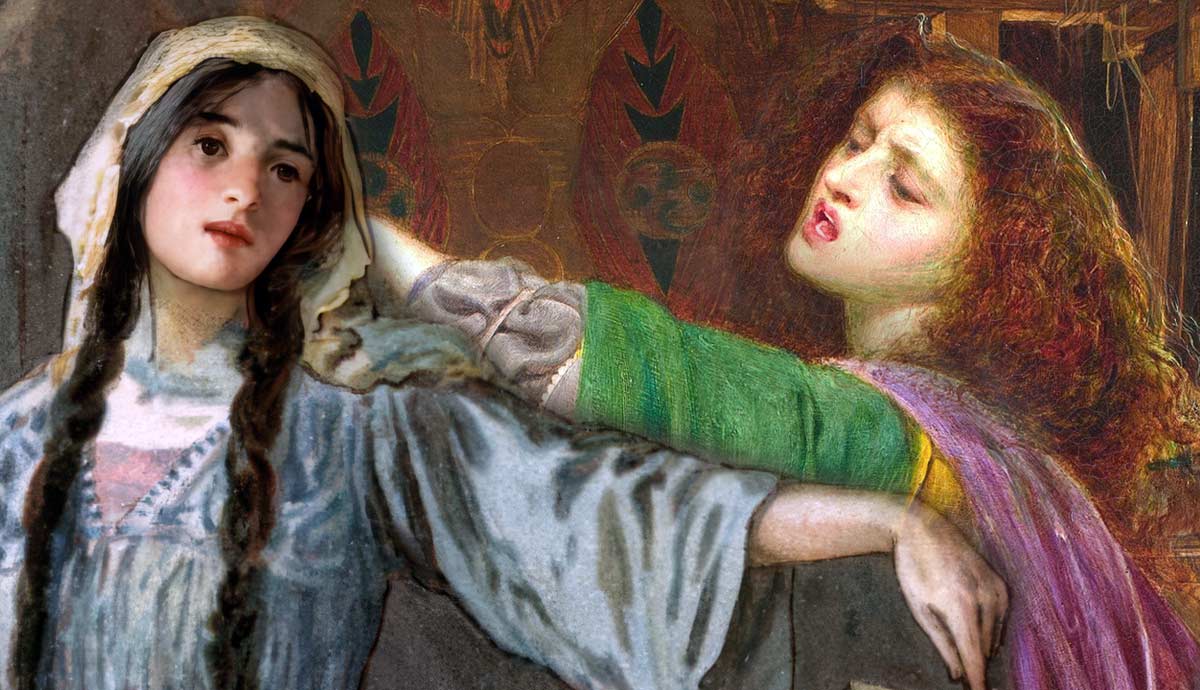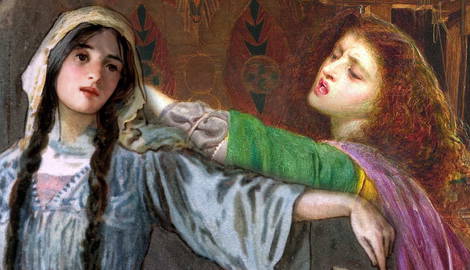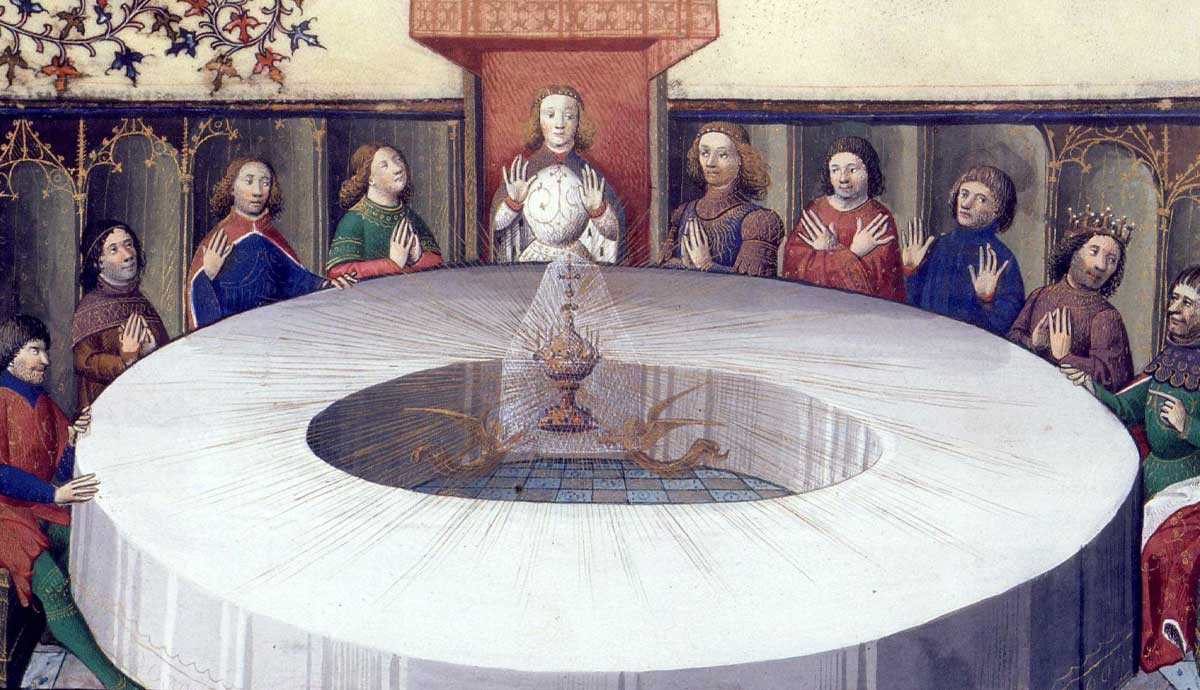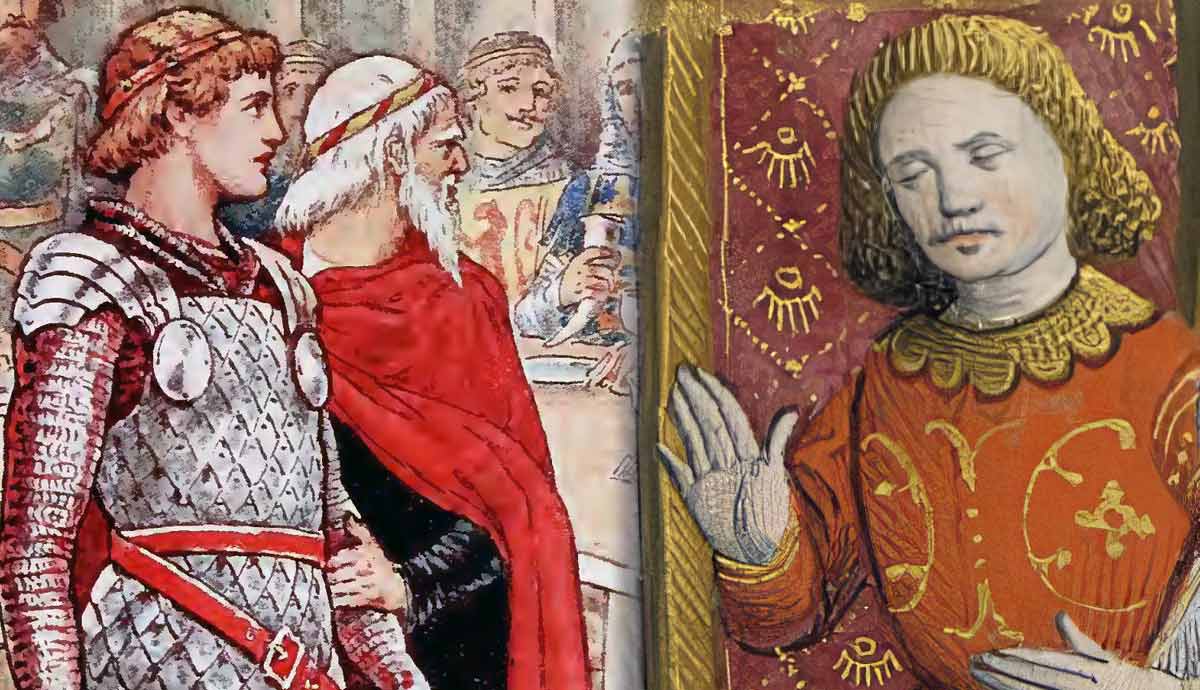
Morgan le Fey, or Morgan le Fay, is a character who appears in many versions of the Arthurian legends and is a popular character in modern retellings. She is famous as an evil sorceress who schemed against King Arthur throughout his life. In reality, she was more complicated than just a straightforward villain. In fact, her earliest appearances present her as completely benevolent. Nevertheless, in this article, we will examine the most famous versions of her life story in the Arthurian legends. We will see how these versions really portray her and how she attempted to oppose the high king of Britain.
Origins of Morgan le Fey: Arthur’s Half-Sister?

The character of Morgan le Fey in popular tradition is very different from how she appears in the earliest sources. She first appears in Geoffrey of Monmouth’s Vita Merlini, or Life of Merlin, written in c. 1150. There, she is presented as a benevolent healer on the Isle of Avalon, to whom Arthur is taken after the Battle of Camlann. In subsequent sources, such as the writings of Chretien de Troyes, she has an expanded role, being portrayed as Arthur’s sister. Nevertheless, there is no hint of evil in her character up to this point.
However, this all changes once we get to the 13th century. In c. 1200, Robert de Boron wrote the poem Merlin. In c. 1210, this was then adapted into a prose version, possibly written by the same author. This served as the basis for the Vulgate Cycle, written between c. 1210-1235. It is the Vulgate Cycle that presents one version of the classic tale of Morgan le Fey’s life.

According to this Prose Merlin, Morgan was the daughter of Igerna, King Arthur’s mother. However, her father was not Uther Pendragon but the Duke of Cornwall. In the most popular version of the legend, the duke in question was Gorlois, Igerna’s previous husband. However, some versions make her illegitimate. Her sisters were Blasine (better known as Elaine, from Thomas Malory’s much later Le Morte d’Arthur) and Brimesent (better known as Morgause, from Le Morte d’Arthur).
While the Vulgate Cycle presents Arthur’s sisters as marrying kings apparently early on after Uther killed Igerna’s husband and took her for himself, things were different in Morgan’s case. She was sent to a convent. There, at least according to one version, she became an expert in the seven arts and applied herself to studying magic, astrology, and healing. It was from this upbringing that she eventually became a powerful sorceress. She is portrayed as being extremely clever and beautiful but also contentious and difficult to reason with when angry.
Animosity Between Morgan le Fey and King Arthur

The various tales in the Vulgate Cycle are not completely consistent with each other. Nevertheless, Morgan is generally portrayed as betrothed or married to Urien of Gorre after her education in the convent. This figure, interestingly, is known to have been historical. He was Urien Rheged, king of a kingdom in the north of England and southern Scotland. His lover in Welsh tradition is a certain Modron, probably derived in part from the Celtic goddess Dea Matrona. This means that Morgan le Fey can partially be derived from this Celtic goddess.
In any case, the legend tells of how Morgan, married to Urien, served as one of the court ladies of Guinevere, King Arthur’s queen. At the same time, she was unhappy with her husband, Urien. This set of circumstances set the stage for her conflict with King Arthur, which defined her relationship with him throughout the rest of his reign and made her a villain. What exactly happened?

While serving Guinevere, the two women were very close. They had an excellent relationship, even sharing two near-identical rings as a sign of their friendship. At the same time, being unhappy with Urien, Morgan started an affair with one of Arthur’s knights or vassals named Guiomar. This is consistent with the following description from the Suite du Merlin:
“But she was the most lustful woman in all Great Britain and the lewdest.”

Guinevere eventually discovered that this affair was going on. Of course, Morgan was Guinevere’s friend. At the same time, Guiomar was one of Arthur’s allies. Guinevere insisted on breaking up the affair to preserve the honor of everyone involved and of Arthur’s court. This infuriated Morgan, who withdrew from Camelot and turned her back on the queen. This is what started her lifelong hostility against Guinevere and, by extension, King Arthur. In other words, this affair with Guiomar is what leads to her becoming a villain. Interestingly, Thomas Malory does not mention this event, leaving unexplained how or why Morgan became villainous.
How Morgan le Fey Became a Sorceress

After leaving Camelot, Morgan went to Merlin to be tutored by him. According to some versions of the legend, as we have already seen, Morgan’s time in the convent provided her with considerable knowledge in magic, healing, and astrology. However, other versions do not present her as acquiring any supernatural knowledge or abilities while there. One example is the Vulgate Lancelot. In any case, there is general agreement that she either started or resumed her study of magic under Merlin, the great magician.
After being tutored under Merlin for a long time, Morgan became an expert sorceress. At the same time, the two of them become lovers. In some versions of the legend, the love is unrequited. Morgan eventually drives Merlin away after learning everything that she can from him, threatening him if he does not leave her alone. Having now become a powerful sorceress from what Merlin has taught her, Morgan begins scheming her revenge on Arthur’s queen.
Morgan le Fey Schemes Against Arthur’s Kingdom

From this point on, Morgan engages in constant schemes to get revenge on Guinevere and to overthrow Arthur. Not only does she want revenge on Guinevere for interfering in her affair with Guiomar, but she also lusts after power for herself. One particularly notable episode was when she plotted to kill Arthur and her husband Urien with her lover, a certain Accolon. However, this scheme failed. Arthur killed Accolon in battle, despite Morgan’s efforts to ensure Accolon’s victory. Nevertheless, Morgan later finds herself with the opportunity to steal Arthur’s magical, protective scabbard. She throws it into a lake, causing it to be lost forever.
While not succeeding in killing Arthur directly, this act of Morgan is very important. It is because of losing his scabbard that Arthur again becomes completely vulnerable in battle. This, in turn, leads to him being mortally wounded at the Battle of Camlann many years later. Hence, Morgan’s actions did lead to Arthur’s death, albeit not immediately.

Throughout the Vulgate and Post-Vulgate Cycle, as well as Thomas Malory’s Le Morte d’Arthur and other tales, Morgan is a constant source of threat to Arthur and his kingdom. The famous story of the Green Knight, whose head was chopped off non-fatally by Gawain in Arthur’s court, was set in motion by Morgan le Fey to terrify Guinevere. On various occasions, she attempted to reveal the affair that was occurring between Guinevere and Lancelot.
At one point, Morgan pretends to try to make peace with Arthur. She sends him a mantle that would kill the wearer. Fortunately for Arthur, he does not put it on himself. Rather, to test its safety, he has Morgan’s messenger wear it first. The messenger, a girl for whom Morgan has great affection, falls down dead.

Eventually, according to the Vulgate Mort Artu, Morgan became tired of scheming against Arthur. She retired to a beautiful castle and lived there essentially in isolation. However, Arthur happened to stumble across it. Morgan received him kindly, and the two apparently reconciled. Nevertheless, Morgan took the opportunity to show him the frescoes that Lancelot had painted while imprisoned there, which revealed his affair with Guinevere. This, finally, contributed to the end of Arthur’s kingdom by virtue of the massive conflict that it caused.
Morgan le Fey in the Arthurian Legends

In summary, Morgan le Fey is a powerful sorceress in the Arthurian legends. She is a major enemy of King Arthur, being responsible for considerable conflict throughout his reign, despite being his half-sister. This all started when her affair with Guiomar was discovered by Guinevere. This resulted in her leaving Camelot and searching for Merlin, who trained her in the magical arts. From this point on, she regularly engaged in schemes to kill Arthur or expose Guinevere’s affair with Lancelot.
In two important ways, she did bring about Arthur’s downfall. Firstly, she threw away Arthur’s magical scabbard, leaving him vulnerable in battle. Secondly, towards the end of Arthur’s reign, she helped to reveal that Guinevere and Lancelot were having an affair. This led to war between Arthur and Lancelot, ultimately leading to Arthur’s mortal injury at the Battle of Camlann.
Nonetheless, Morgan retired to the Isle of Avalon, as in her very earliest appearance in literature, where she occupied the role of Arthur’s healer.







